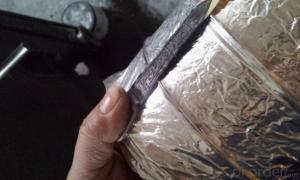Composite Honeycomb Sandwich Panels: The Strength of Composite Materials
Have you ever marveled at the sleek design of modern aircraft, the robustness of high-speed trains, or the elegance of modern architecture? If so, you’ve likely witnessed the power of composite honeycomb sandwich panels. These innovative materials are revolutionizing industries with their exceptional strength, lightweight properties, and versatility. Let’s dive into the world of composite materials and explore their unique characteristics, applications, and the technology behind their creation.
The Essence of Composite Materials
Composite materials are a blend of two or more distinct materials that, when combined, result in a material with properties superior to the individual components. Think of it as a team where each member brings their unique strengths to create a powerful synergy. The most common types of composites include fiber-reinforced polymers, which consist of a matrix material (usually a polymer) and reinforcing fibers (often carbon, glass, or aramid).
The Honeycomb Core: A Game-Changer
At the heart of sandwich panels is the honeycomb core, a structure that resembles the hexagonal cells of a beehive. This core is lightweight yet incredibly strong, providing impressive resistance to compression, bending, and shear forces. Its geometry allows for efficient distribution of loads, making it an ideal candidate for structural applications where strength and weight savings are paramount.
The Skin of the Sandwich: Facings and Adhesives
The outer layers, or ‘skins,’ of sandwich panels are typically made from composite materials, providing a smooth surface for various applications. These skins are bonded to the honeycomb core using high-strength adhesives, ensuring a robust and durable bond. The choice of facing material can vary depending on the specific requirements of the application, such as resistance to heat, chemicals, or impact.
Applications Galore
Composite honeycomb sandwich panels are finding their way into a multitude of applications. In the aerospace industry, they reduce the weight of aircraft, leading to improved fuel efficiency and reduced emissions. In automotive engineering, they contribute to the design of lighter, more efficient vehicles. In construction, they offer a combination of strength and aesthetics, allowing for innovative architectural designs.
The Manufacturing Process: A Peek Behind the Curtain
The creation of composite honeycomb sandwich panels is a fascinating process. It begins with the fabrication of the honeycomb core, which can be made from a variety of materials, including paper, plastic, or metal. The core is then coated with a layer of adhesive, and the composite skins are applied. The assembly is then cured under heat and pressure to ensure a strong bond between all components.
The Future of Composites: Innovation and Sustainability
As we look to the future, the development of composite materials continues to push boundaries. Researchers are exploring new ways to enhance the properties of composites, such as increasing their resistance to environmental factors or developing self-healing materials. Additionally, there is a growing focus on sustainability, with efforts to use recycled materials or bio-based resins in the production of composites.
The Human Touch: Stories of Innovation
While the technology and science behind composite honeycomb sandwich panels are impressive, it’s the human stories that bring these materials to life. Engineers and designers are constantly pushing the envelope, finding new applications and improving existing ones. Their passion and creativity are what drive the industry forward and inspire the next generation of innovators.
Wrapping Up
Composite honeycomb sandwich panels are truly a testament to human ingenuity and the power of collaboration between materials. They embody the spirit of innovation, offering solutions to some of the world’s most pressing challenges. As we continue to explore and develop these materials, the possibilities are as vast as the sky they so often grace.

